Verdant Works Jute Mill
There are so many reasons I love exploring Scotland, but one of my favourites is that you can go almost anywhere and learn a super detailed and varied history. We have visited Dundee a handful of times since we moved to Edinburgh (it takes less than 1.5 hours by train) and it’s easy to come up with reasons to go back. Most recently, we visited the Verdant Works Jute Mill. We spent a fascinating few hours there and could have easily spent longer. Verdant Works may not be at the top of your list of places to visit, but it needs to be.
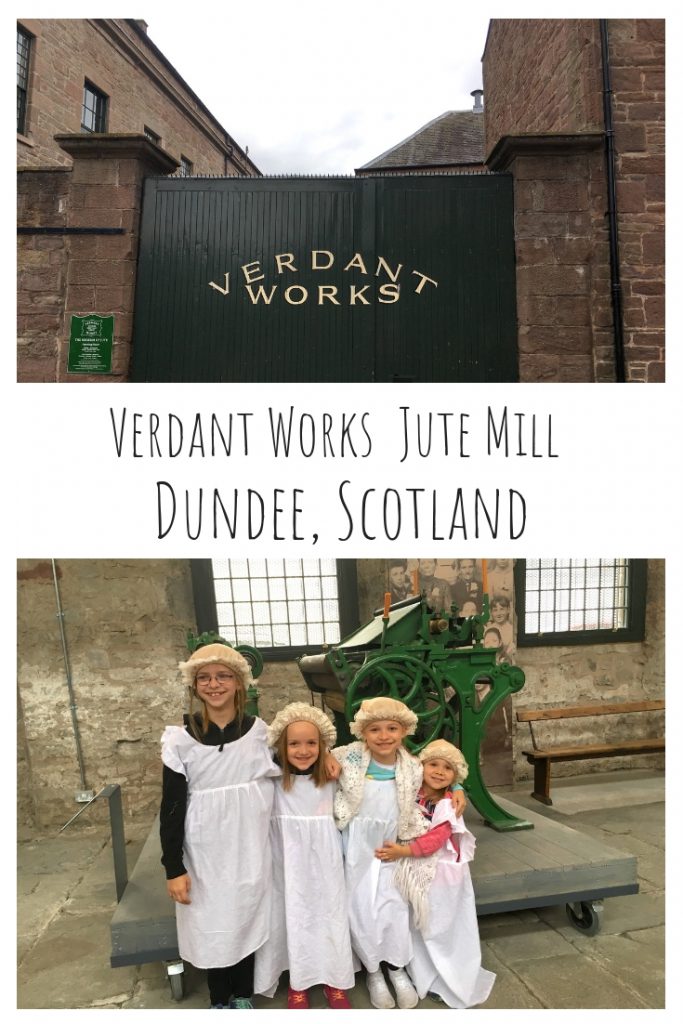
As some of you know, we came to Scotland on an Ancestry Visa. In our case, Scott’s grandfather was born in Scotland and since Scott is already a citizen of a commonwealth country (New Zealand), he had rights to move to the UK and bring his family. In particular, his grandfather was born in Dundee. Even more in particular, Scott’s great-grandmother worked in one of the jute mills of Dundee. While it most likely wasn’t Verdant Works (there were around 150 mills in Dundee at one point that employed more than 50,000 people!), it was a great experience for the girls to experience not only an important piece of Dundee and Scottish history, but a piece of their own family history.
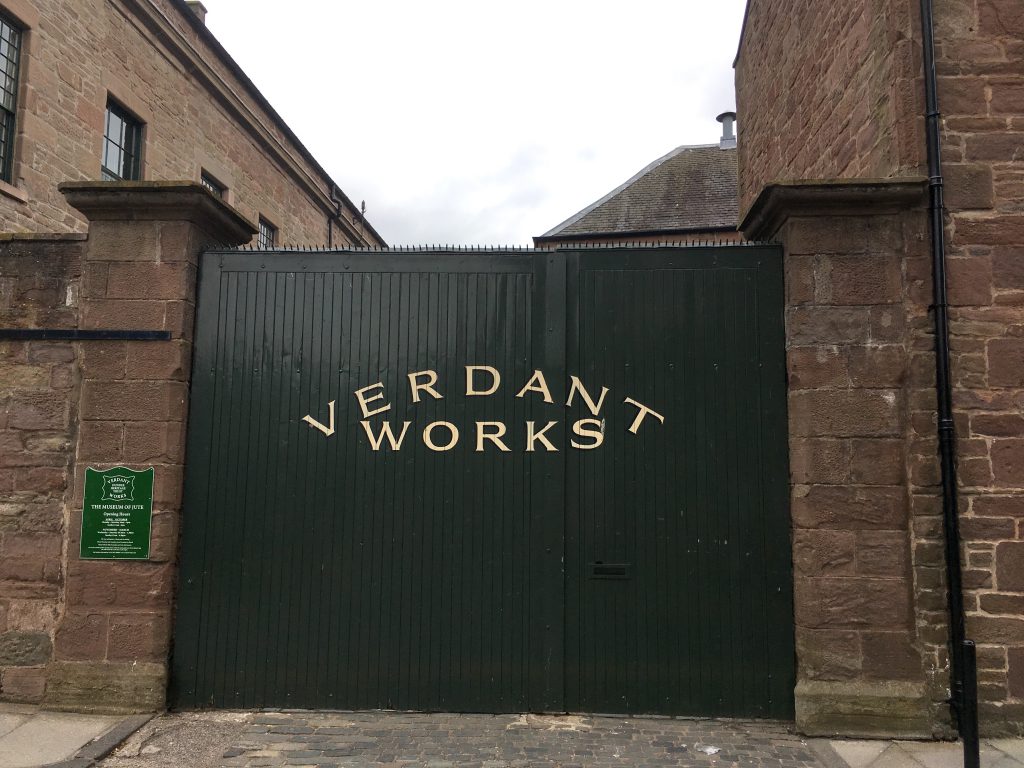
The museum is located inside the restored original mill, with some parts dating back to 1833.
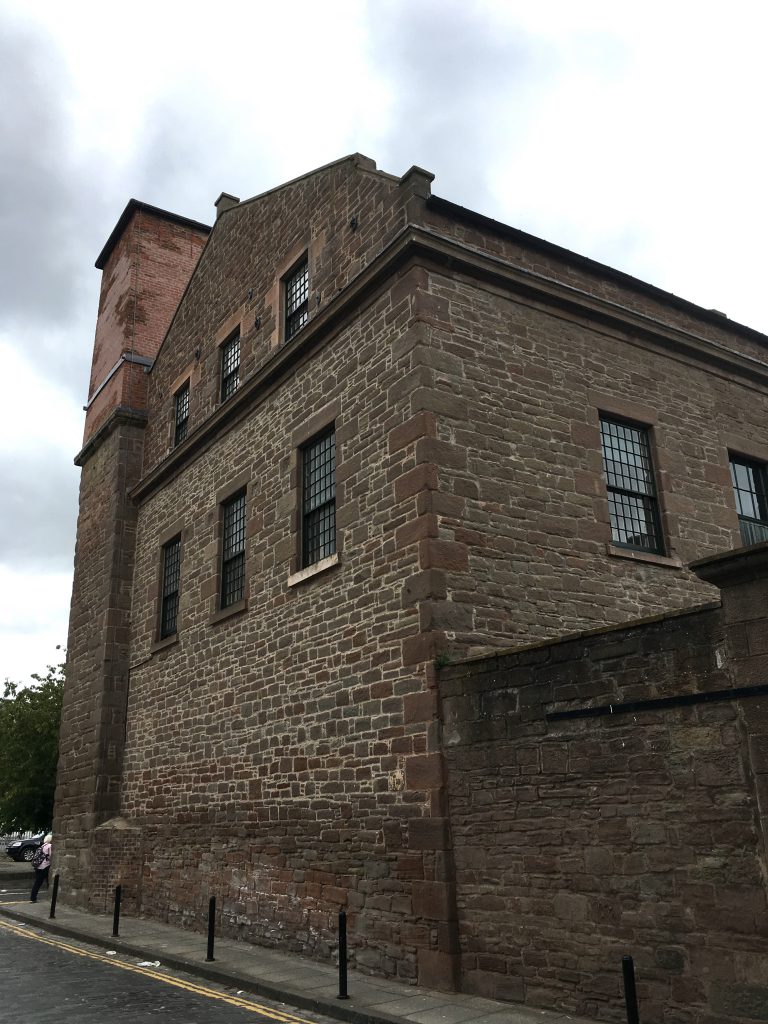
The museum is very interactive and is great for kids. Everything is self-guided, but the route is easy to follow. Not only do you learn the history of the mill itself, you learn about the jute industry as a whole in Dundee.
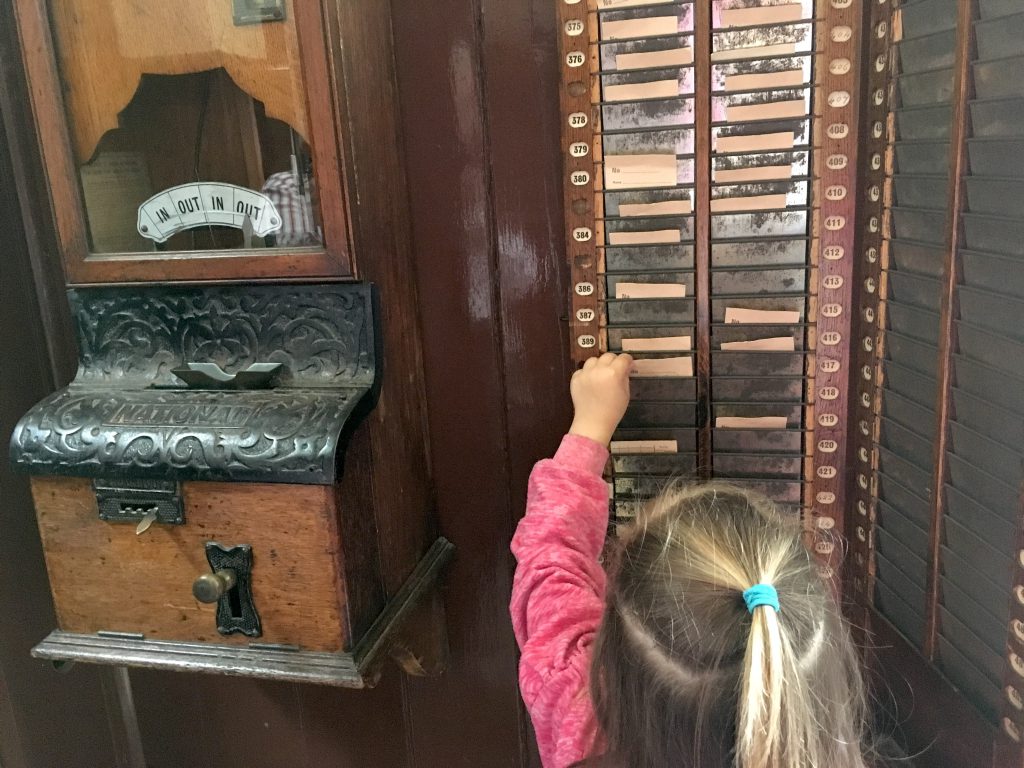

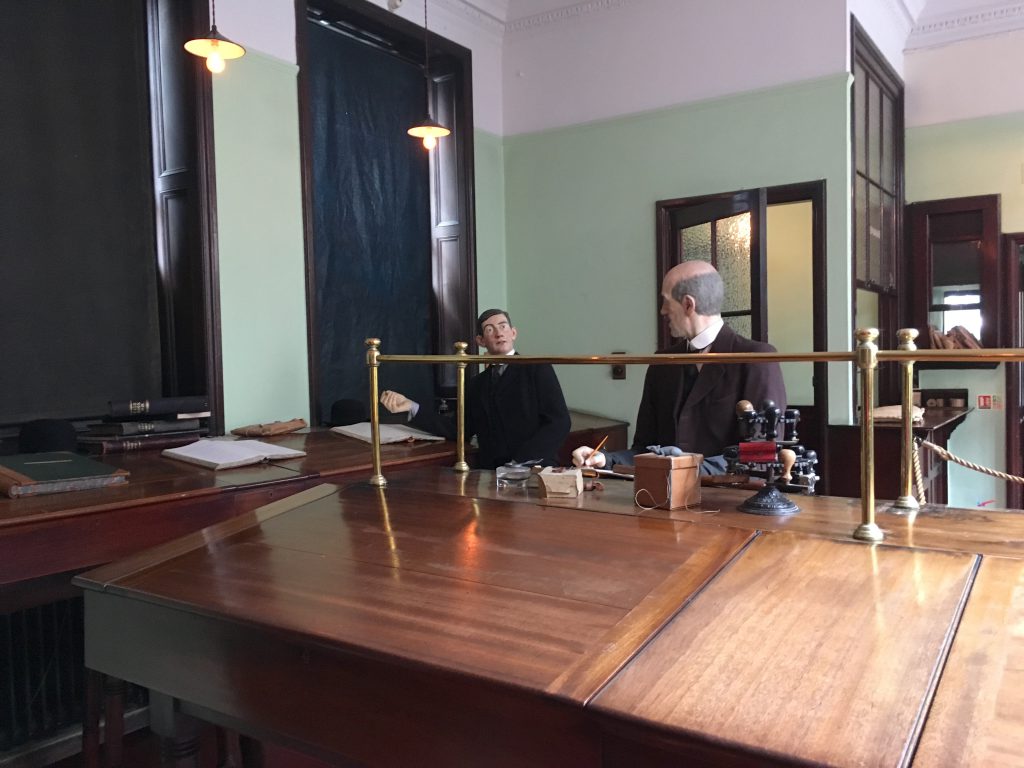
I was a bit worried about the girls getting bored, but Verdant Works is brilliant at keeping the interest of all ages. I was really into all the detailed info (and didn’t get to read nearly everything on offer), but the girls were given things to collect, like these bale marks, which also helped them to explore each area and get caught up in the story.
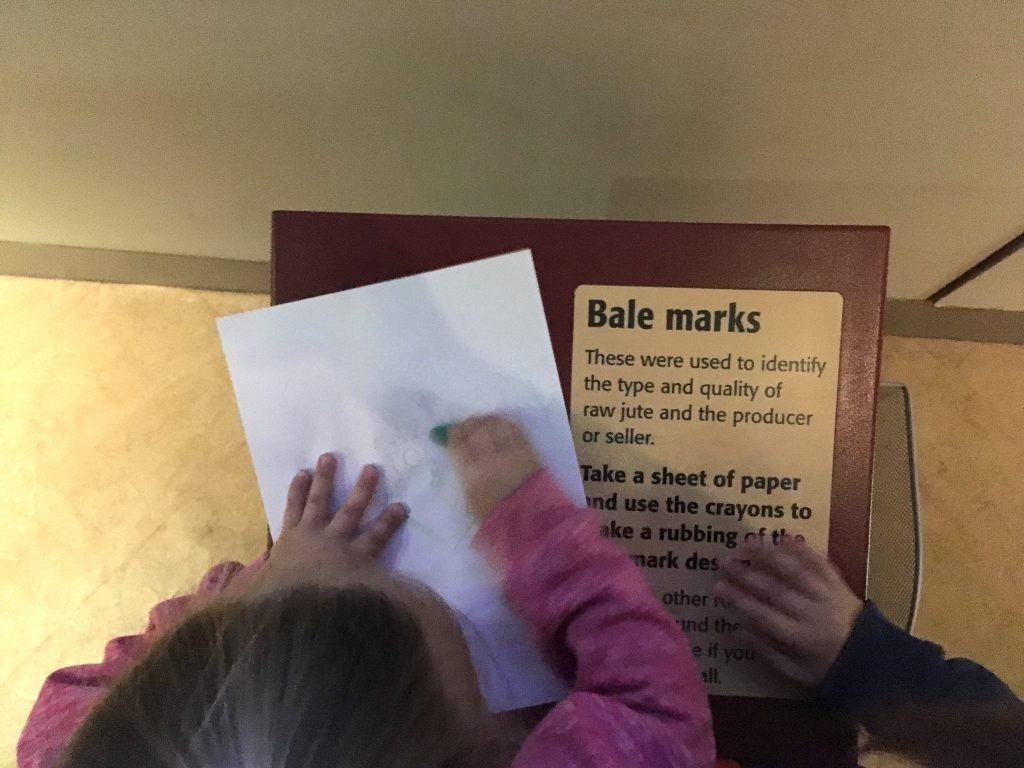
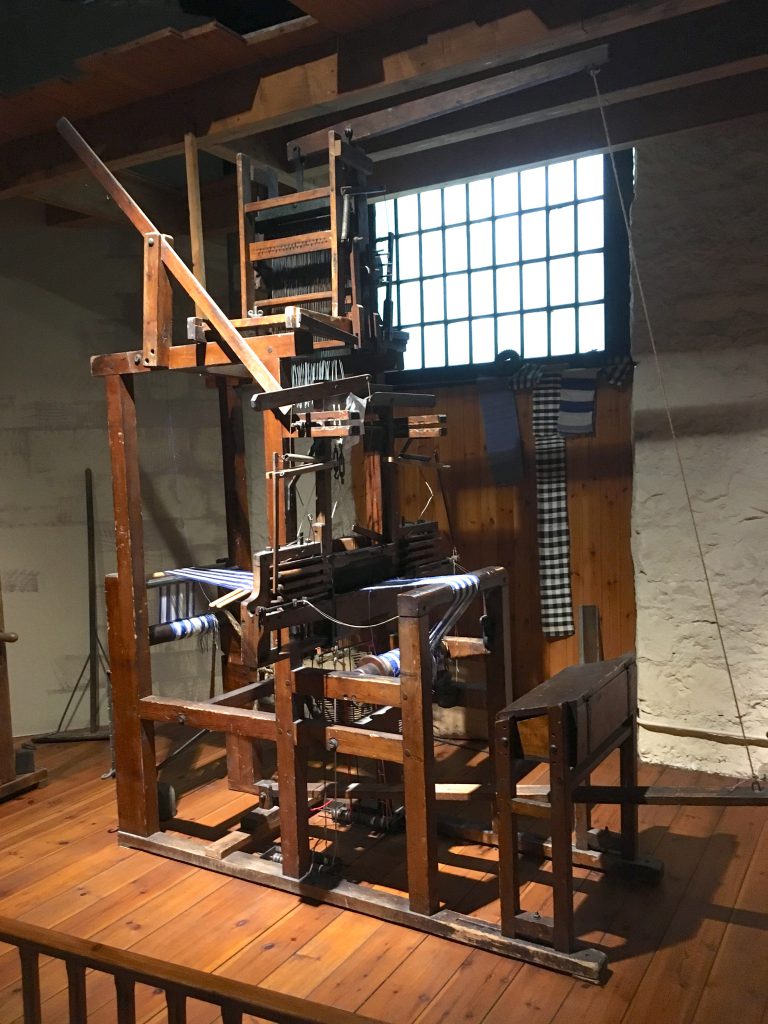
There’s a great mix of original machines and modern technology. As a craft geek, I loved following the process from start to finish and seeing machines that I only knew the modern versions of. For the girls, there were some games that took them through the timeline of both Dundee and the textile industry.
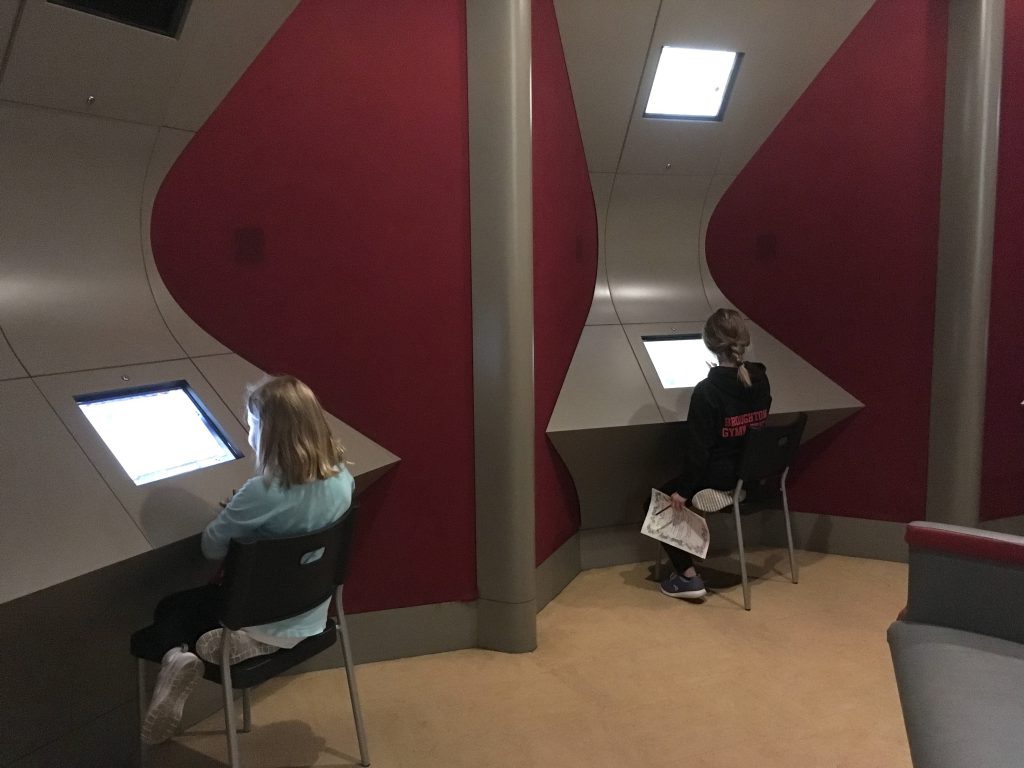

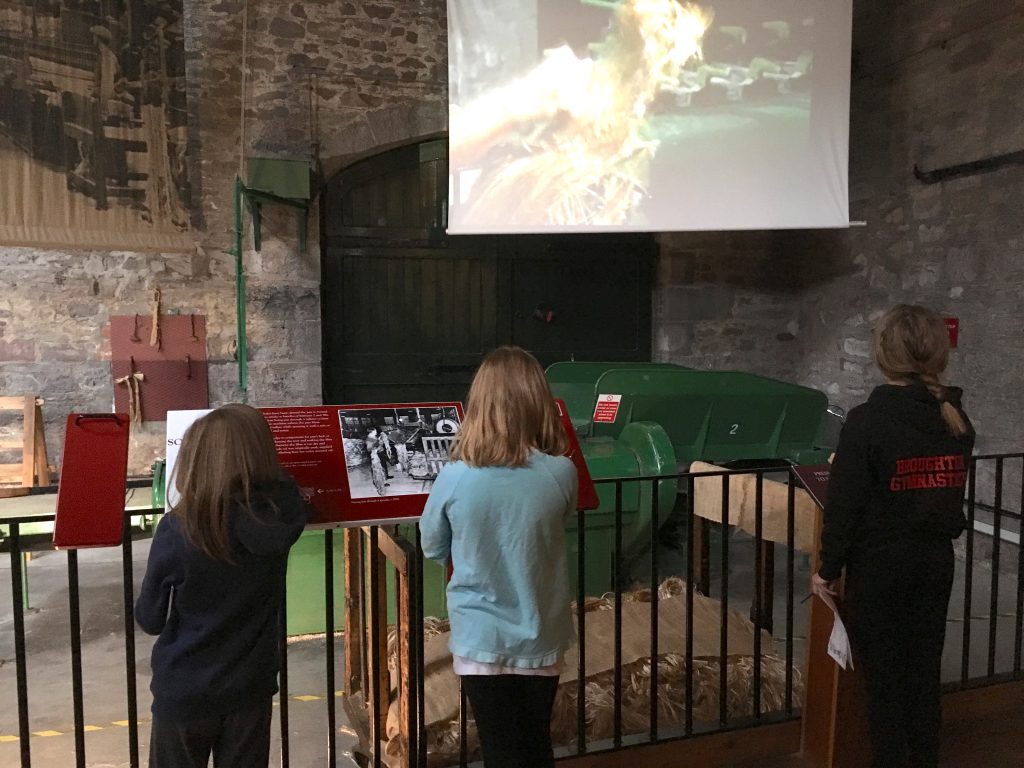
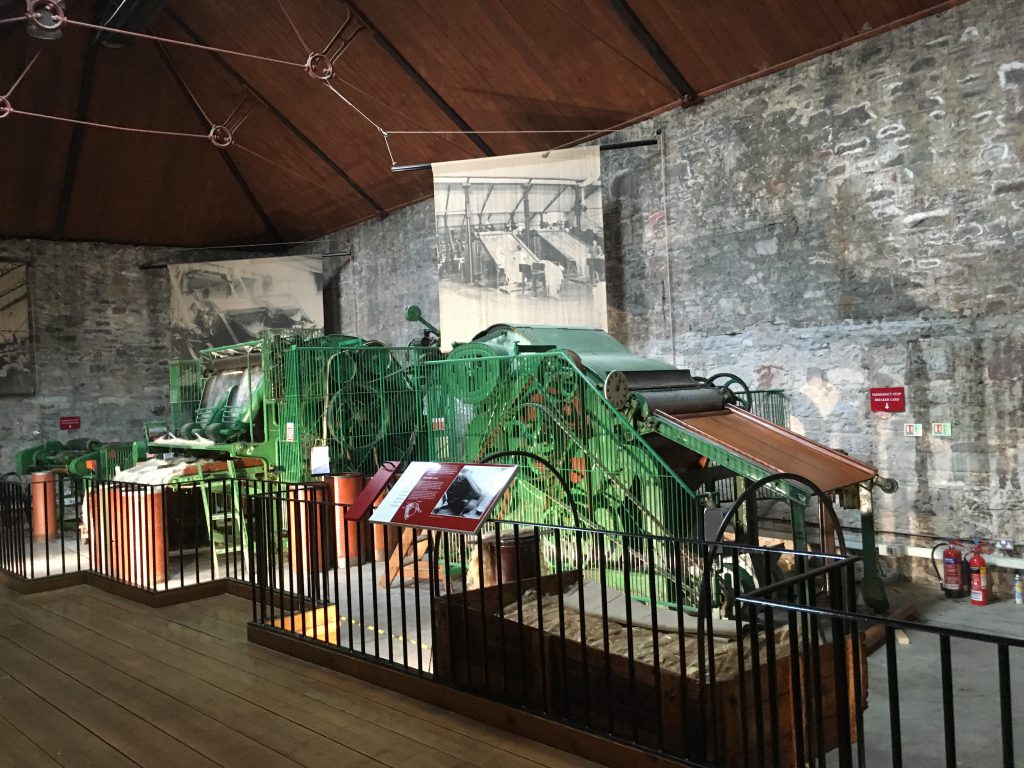
The jute mills in Dundee employed mostly women and young girls (outnumbering men by three to one!), which was highly unusual. They worked long, hard hours and often ended up being the main providers for their family. These women became particularly active in the suffragette movement.
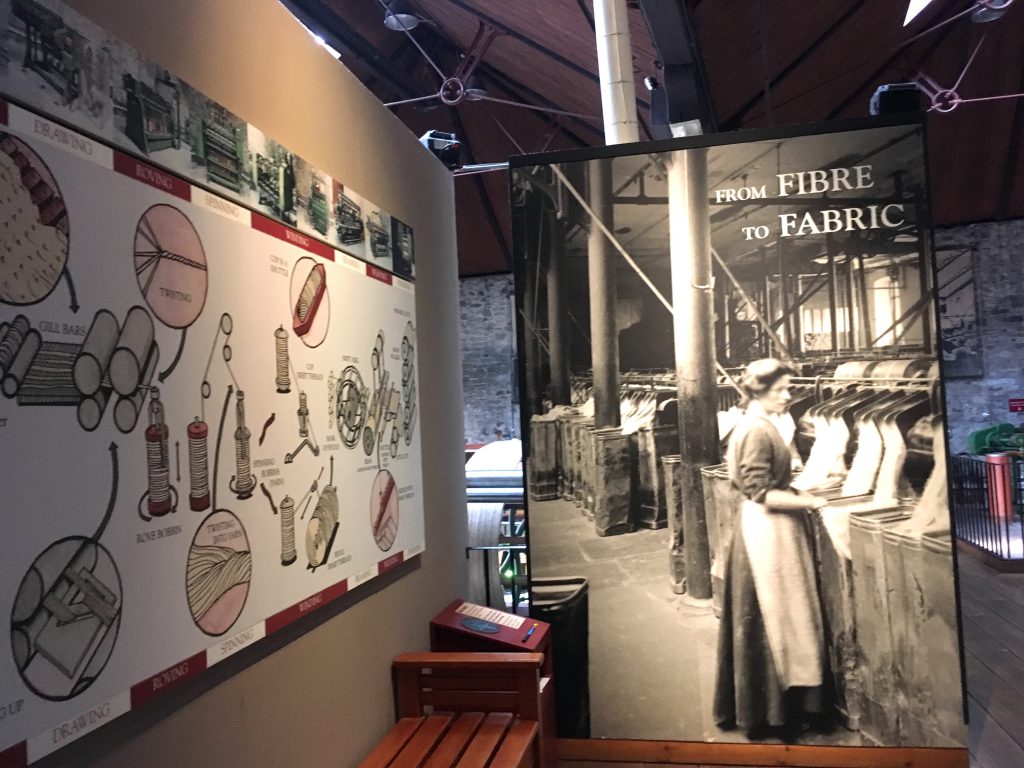
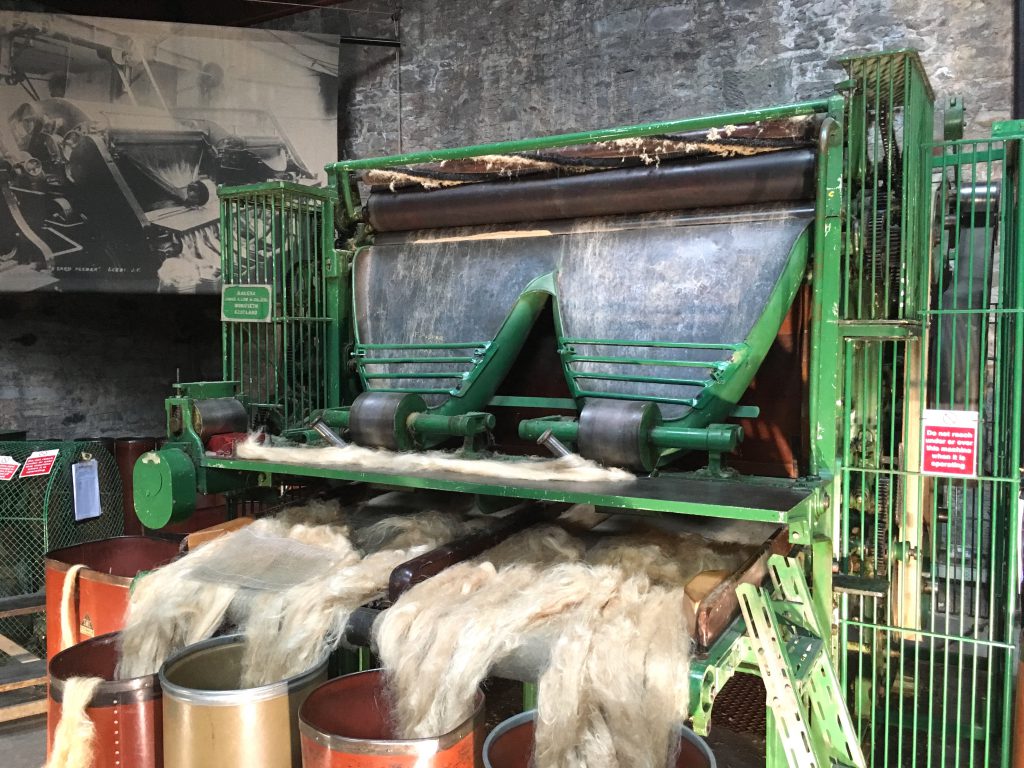
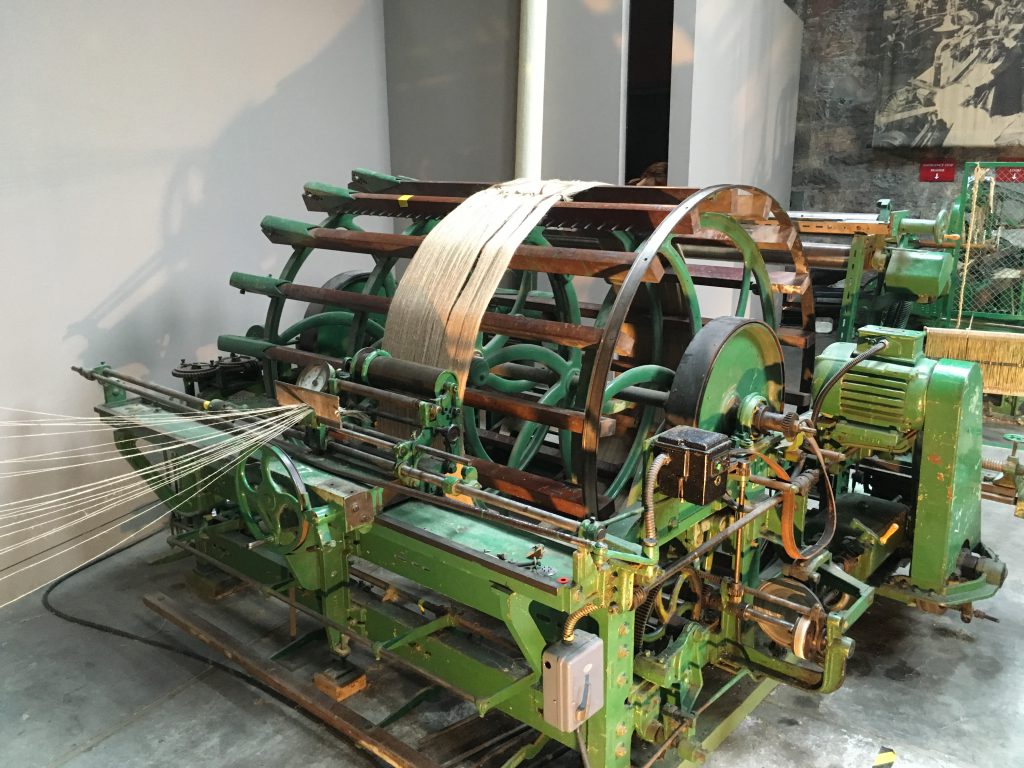
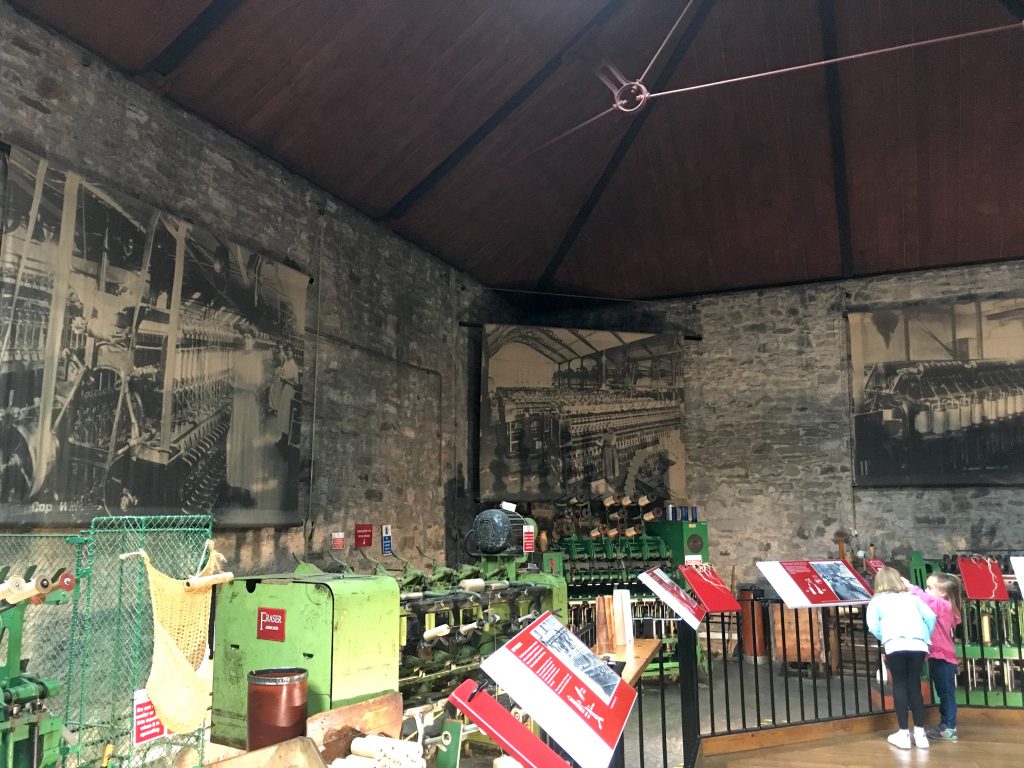

Scattered throughout the museum are examples of jute and textile work. Look at that stitching!
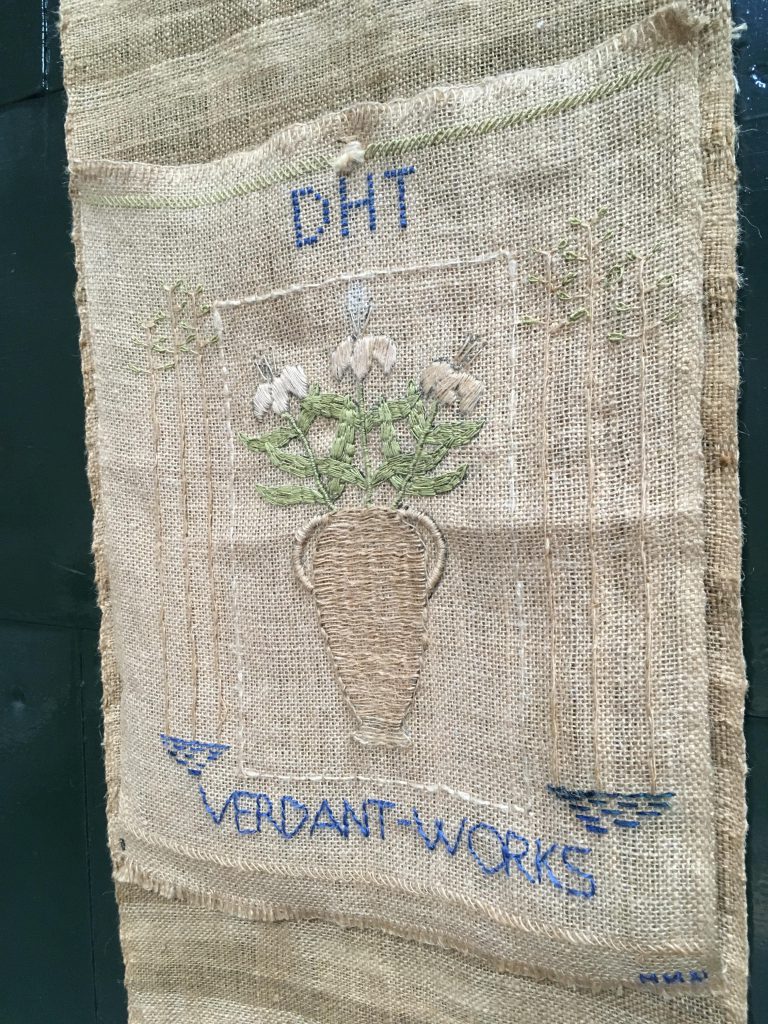
We gave the smelling station a good go and the girls got some of the smells correct. Some of the smells led to further discussions on what was a big deal to ship at the time.
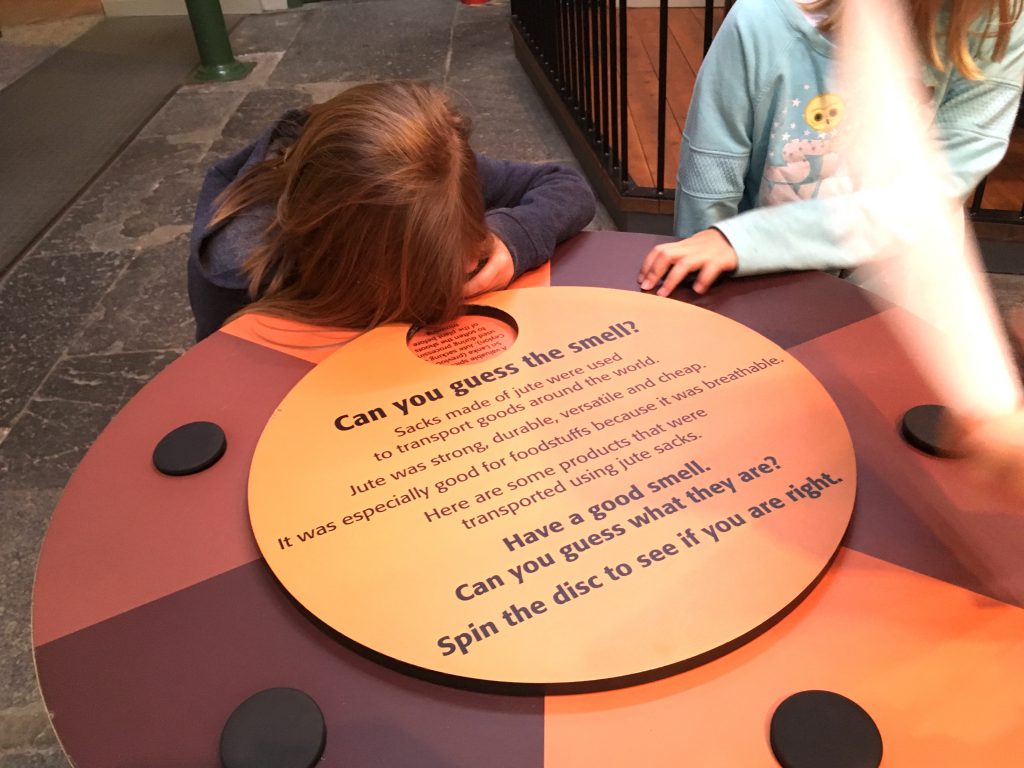
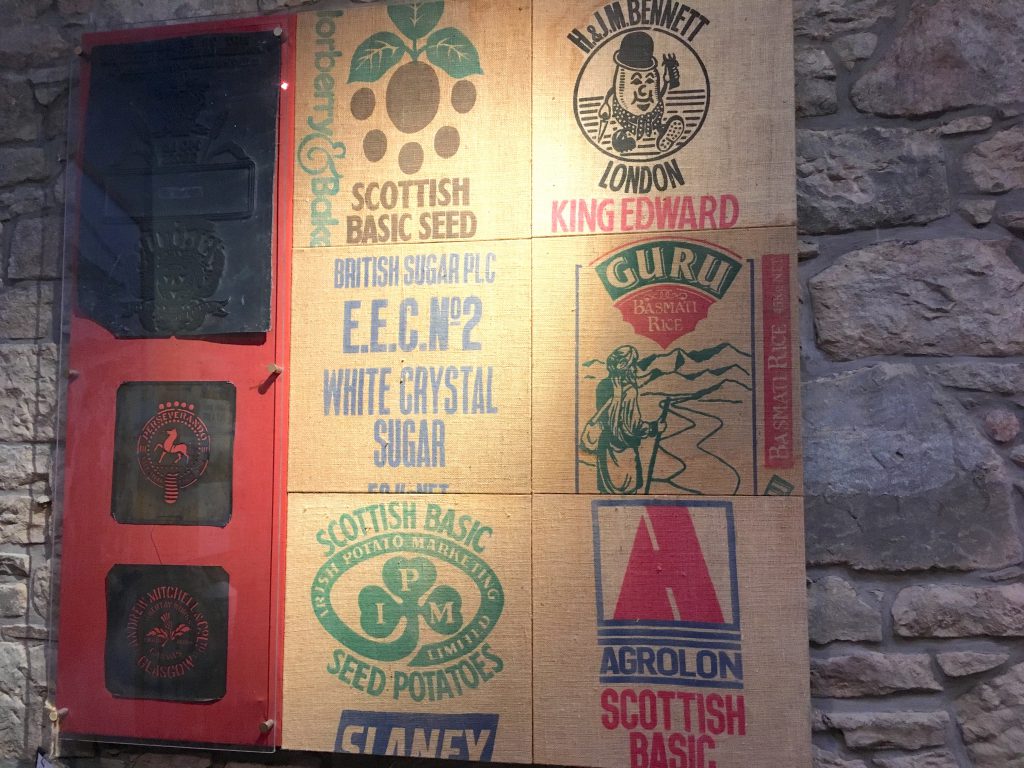
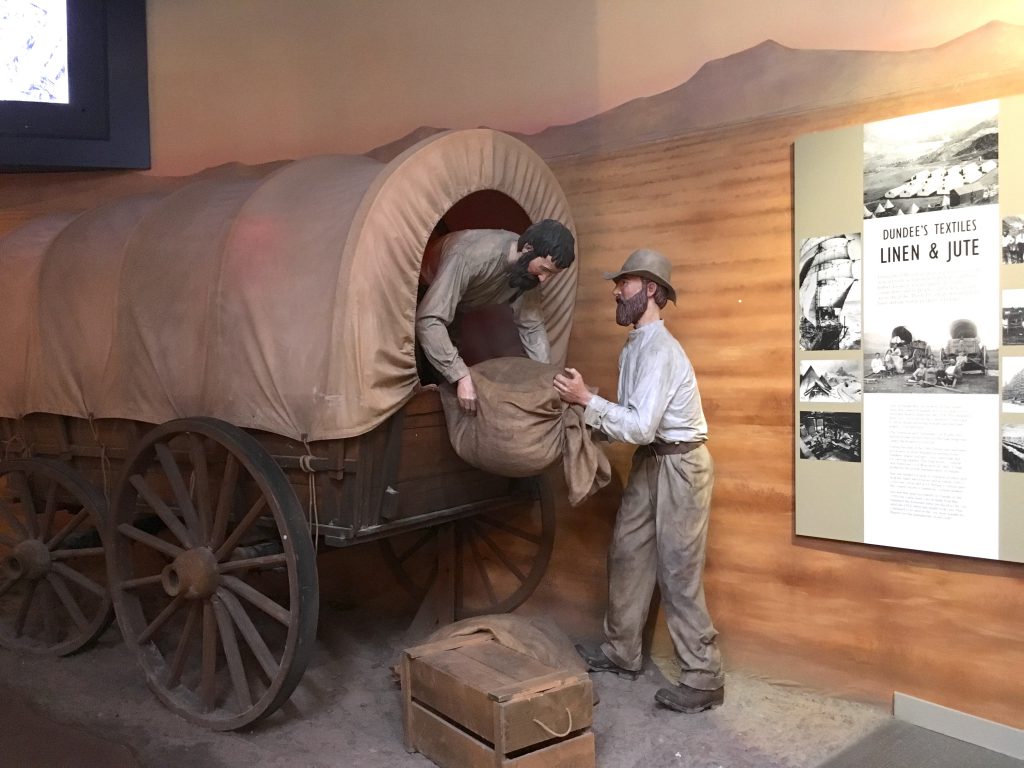
Each room of the mill had so much to see and do that we just couldn’t do it all. I could have easily spent another two hours strolling through the exhibits.
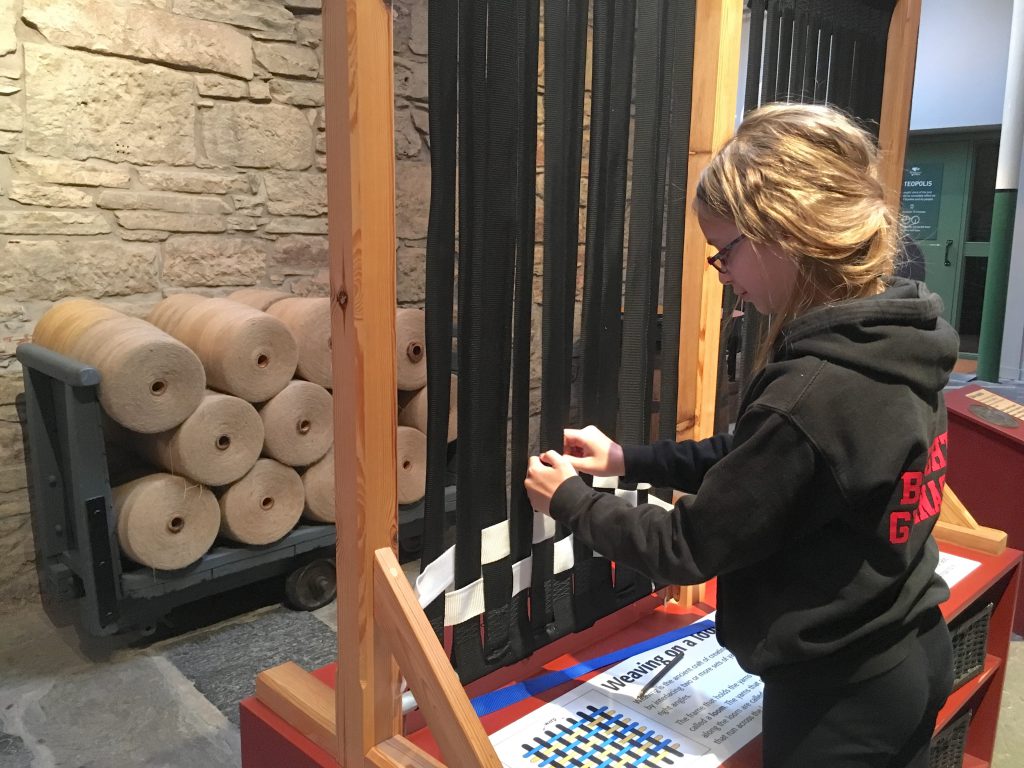
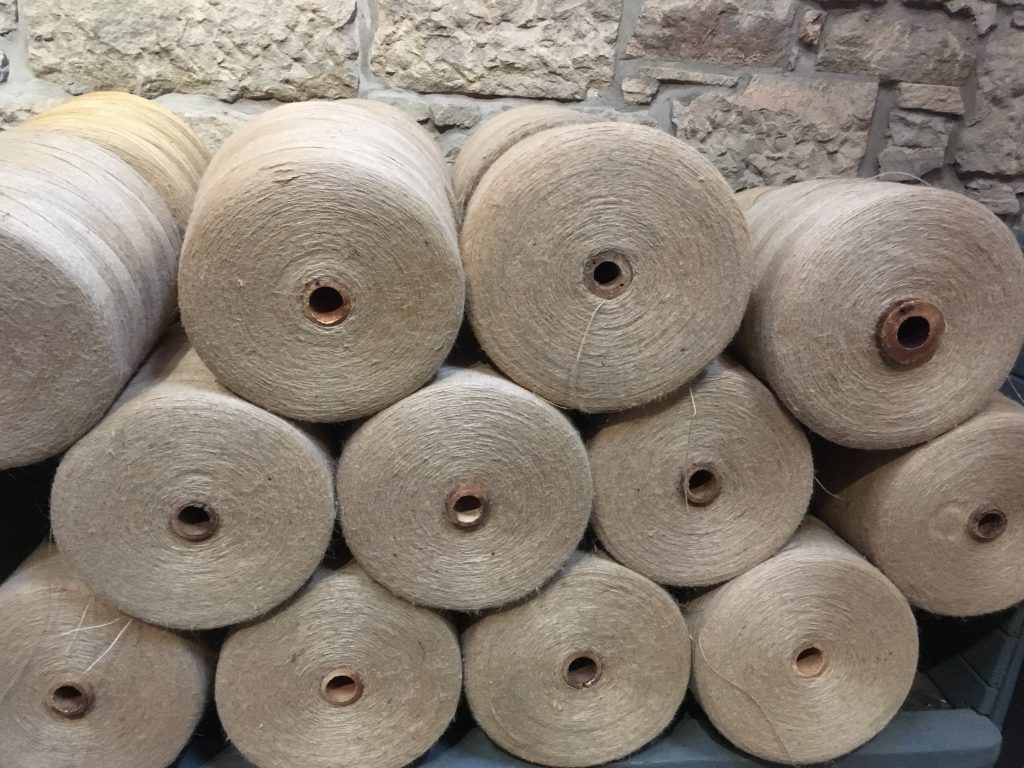
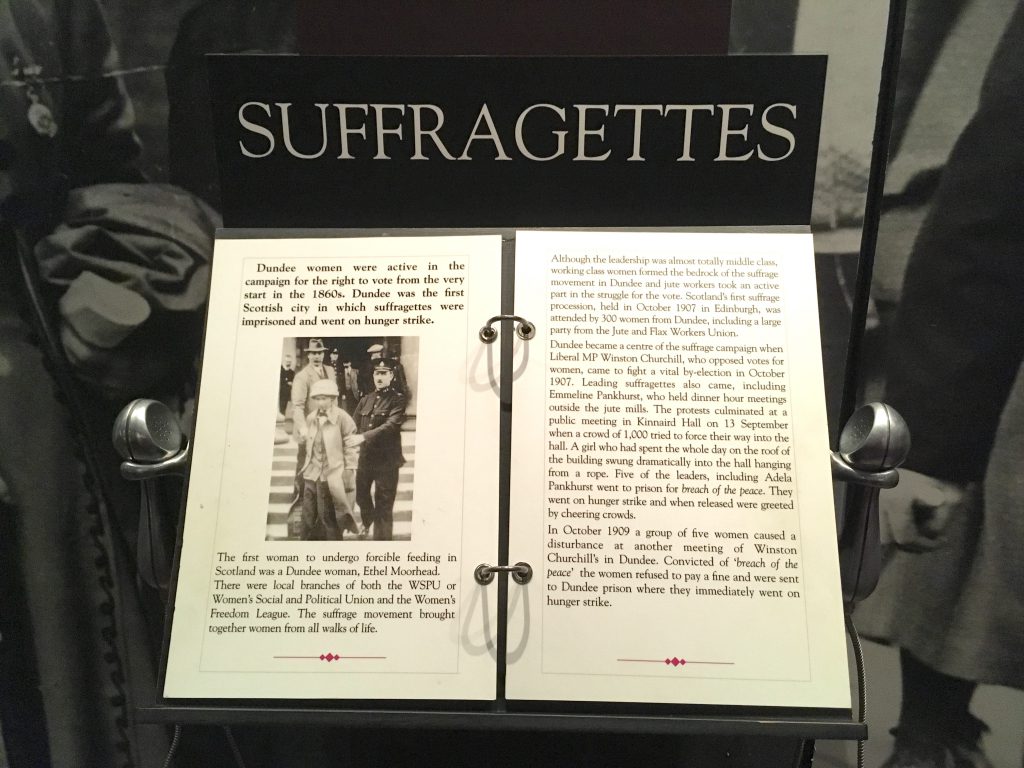
The High Mill (the original building) was restored and opened to the public in 2015. It’s now an open gallery and we were able to get close to and even touch some of the machines.
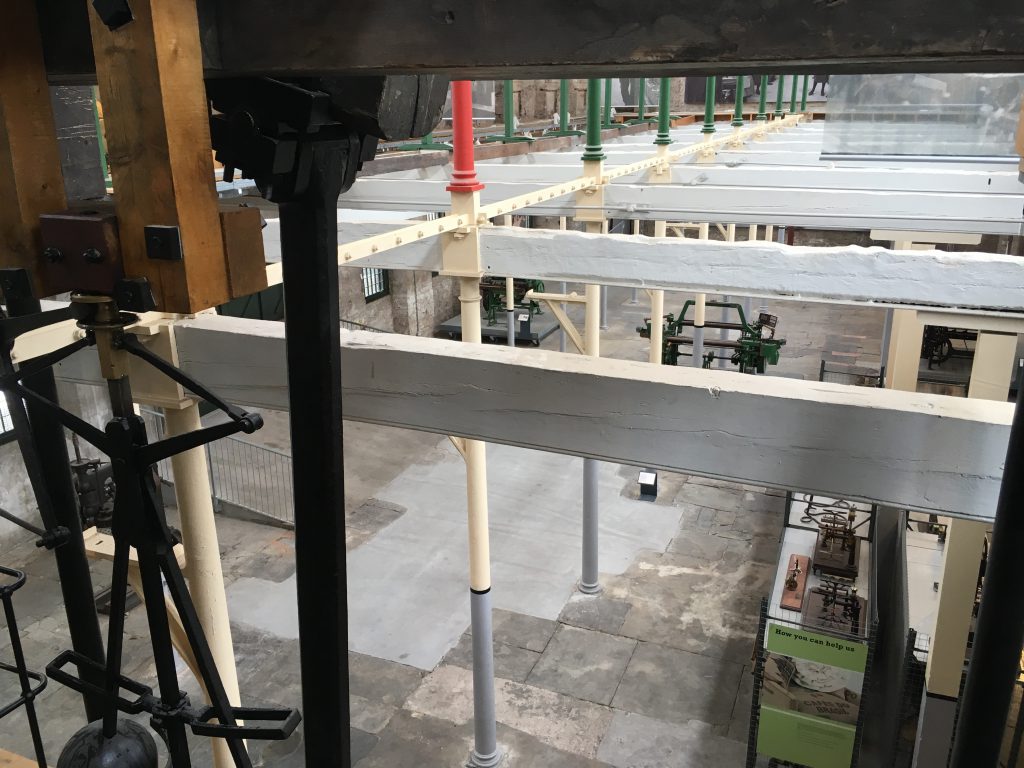
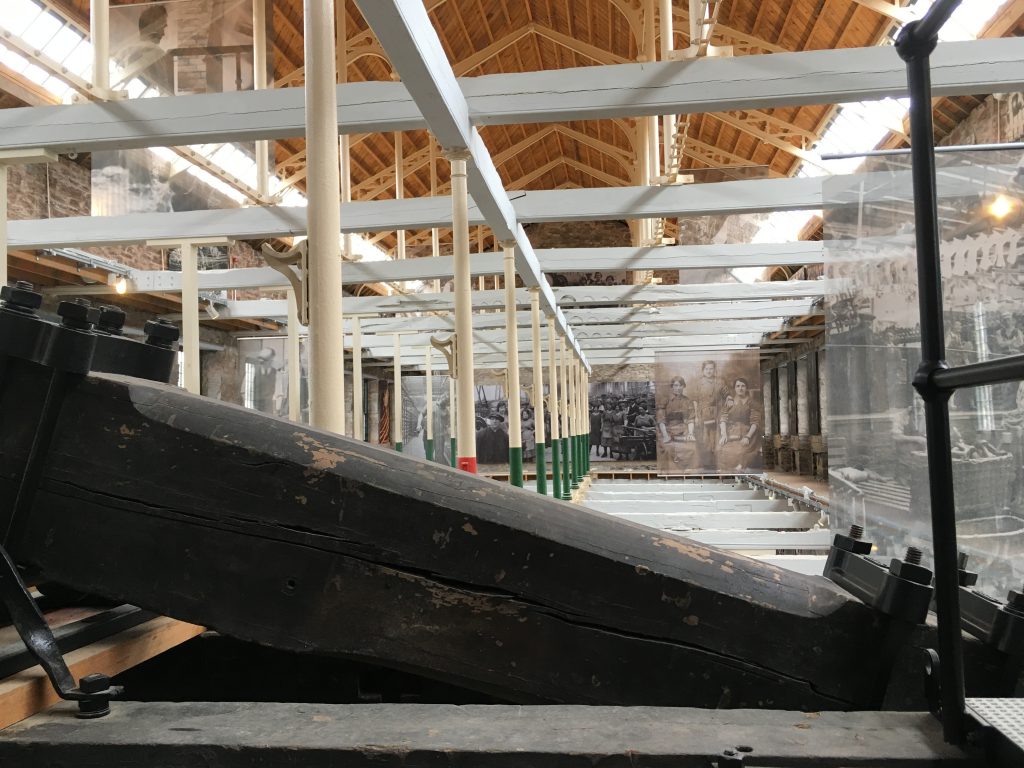

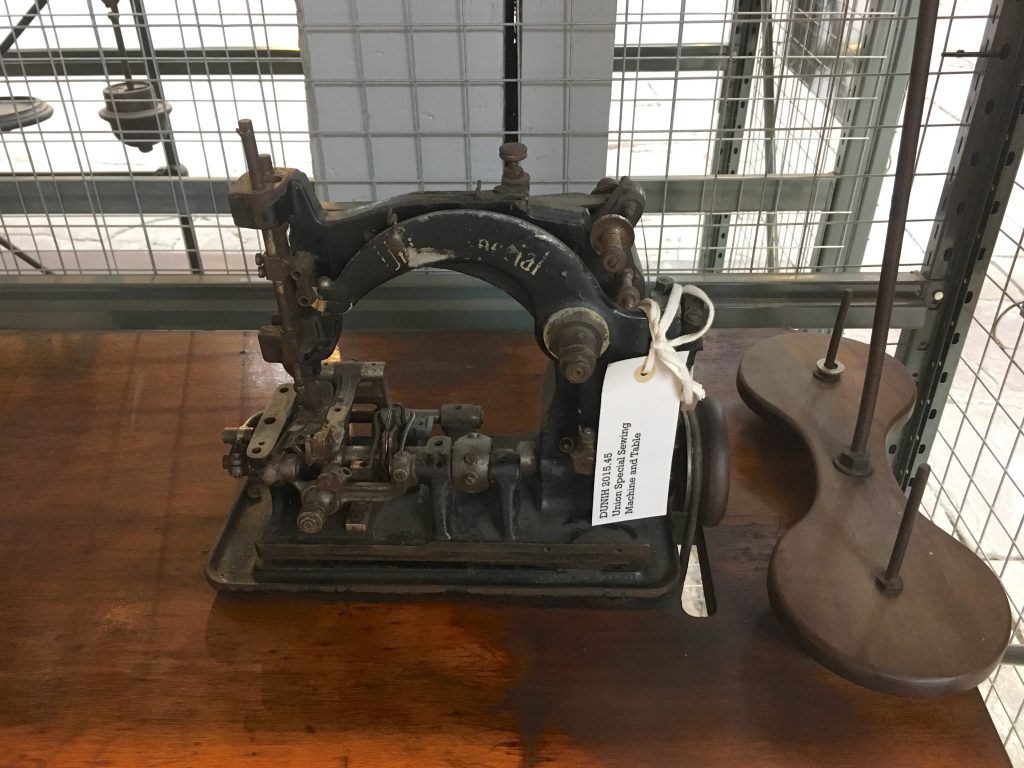
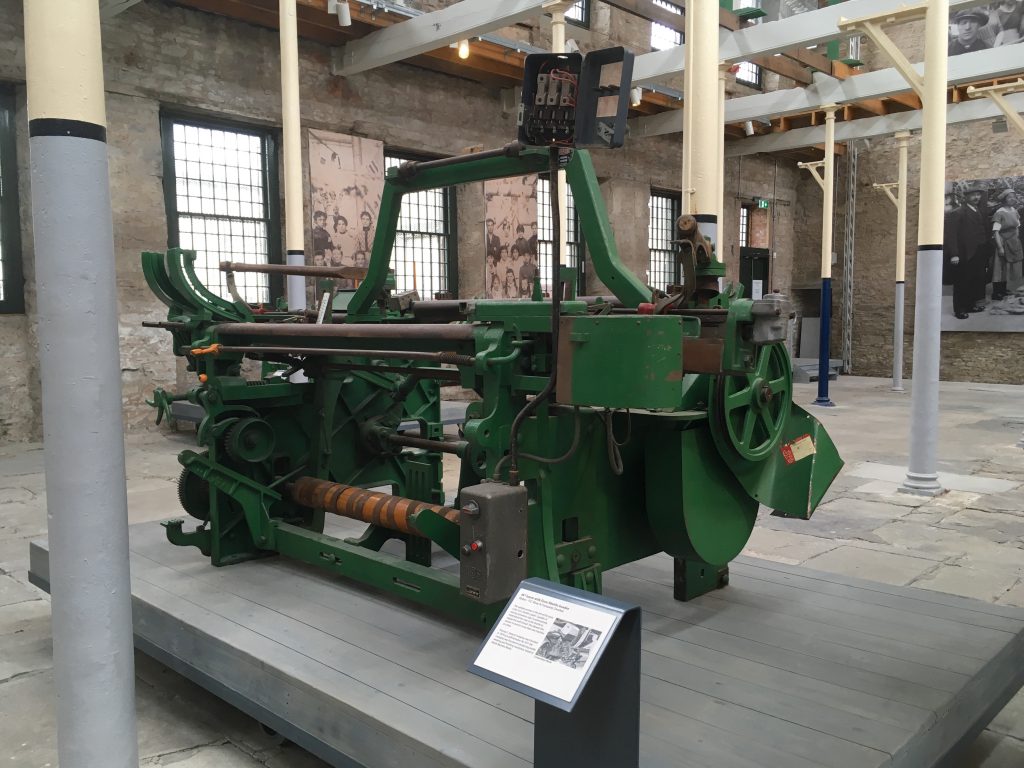
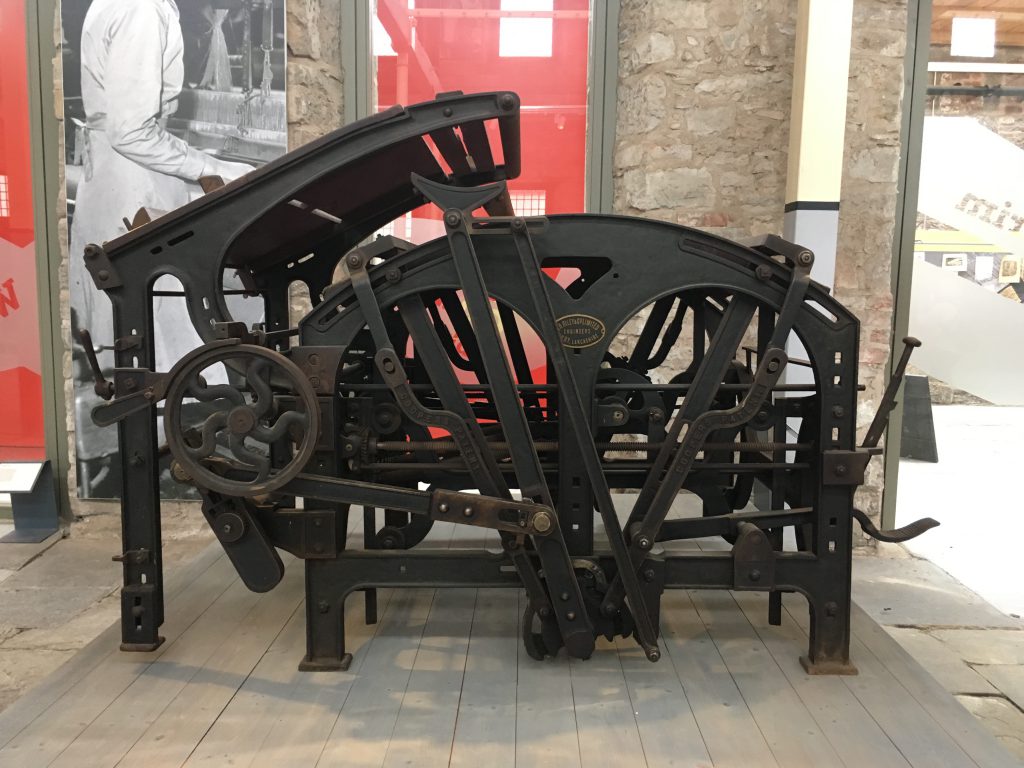
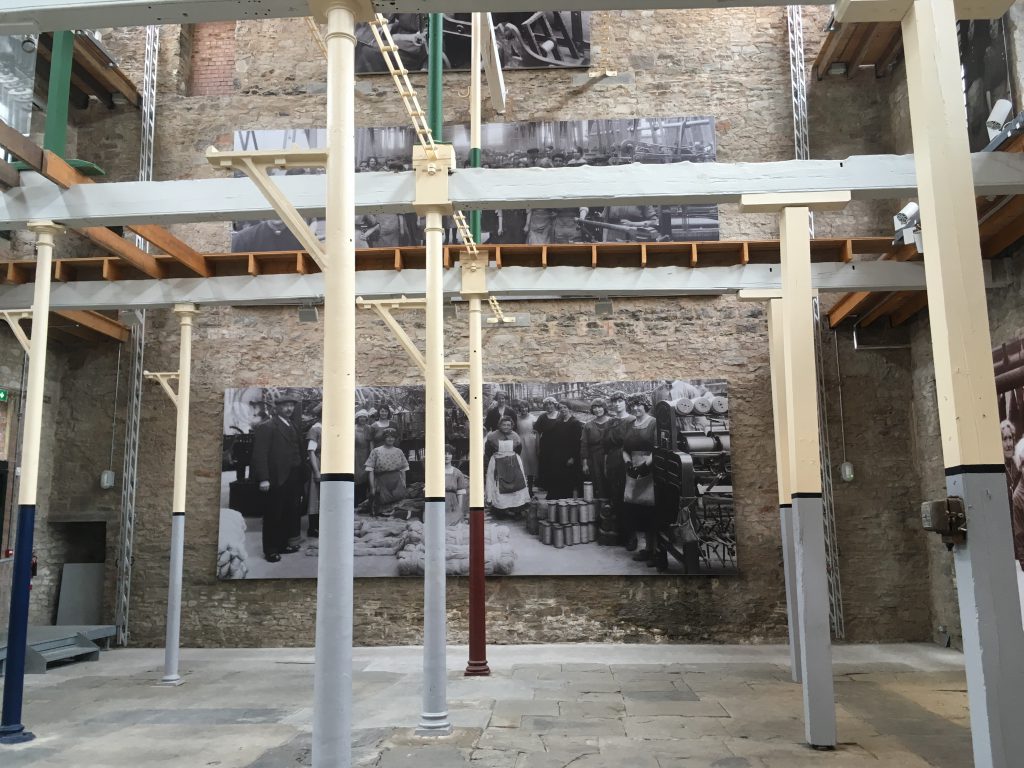
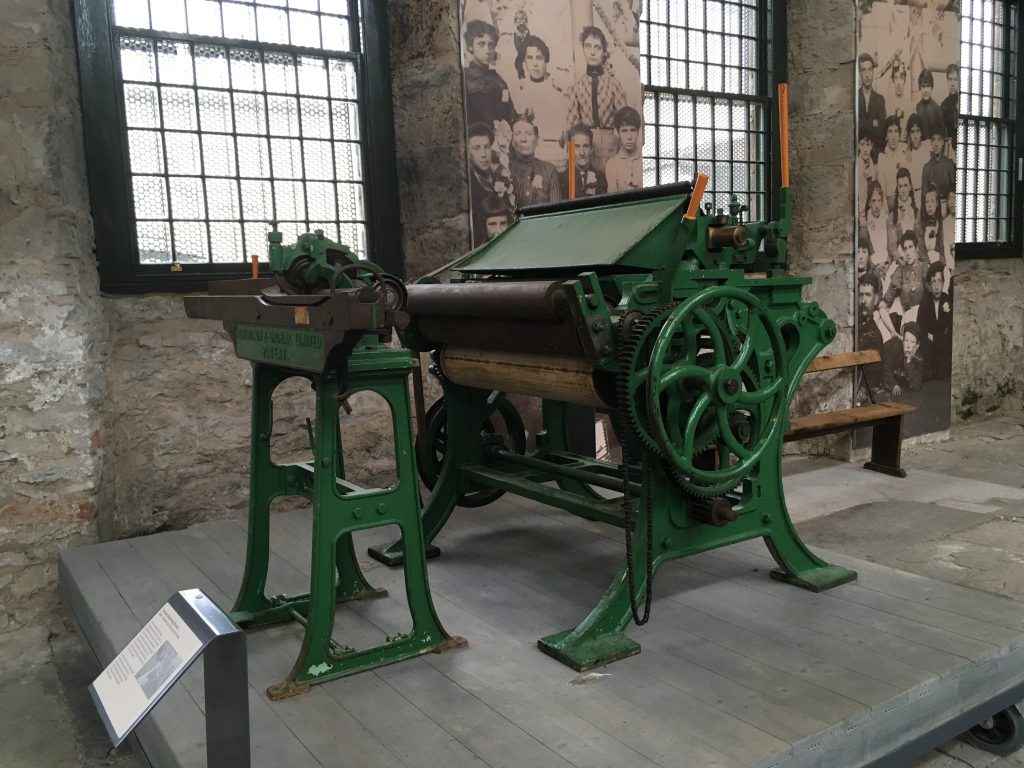

There’s a kids’ area with a costume rack and kids are encouraged to dress as a millworker. The girls are so used to smiling when I get the camera out, but tried their best to be tired millworkers.
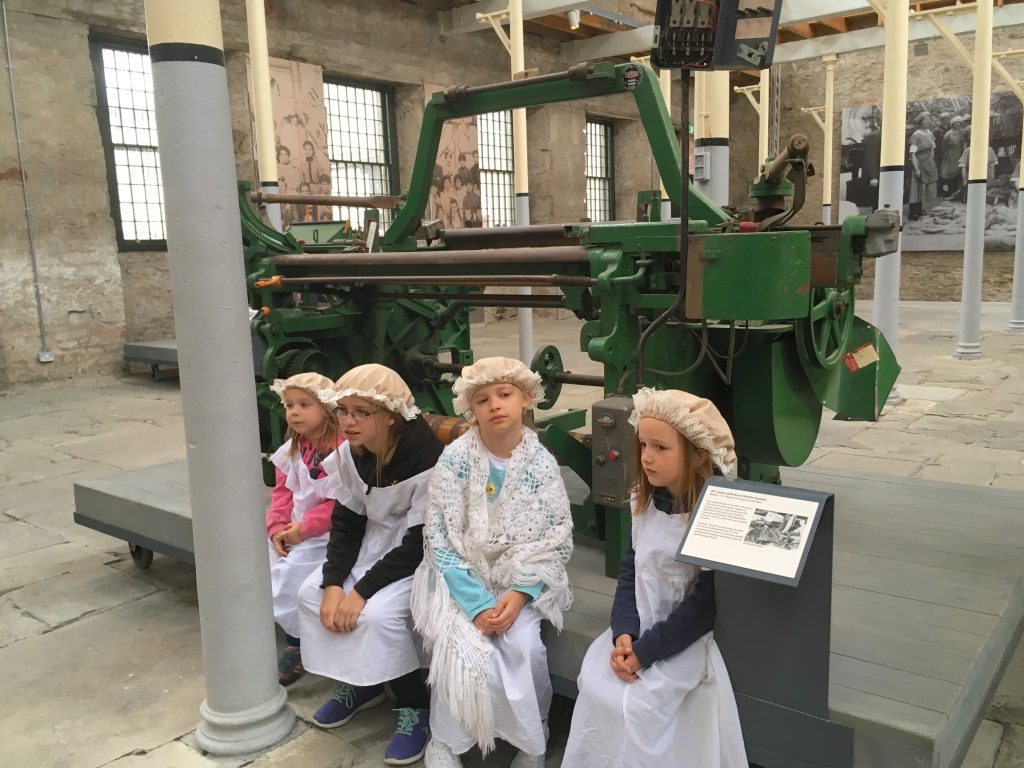
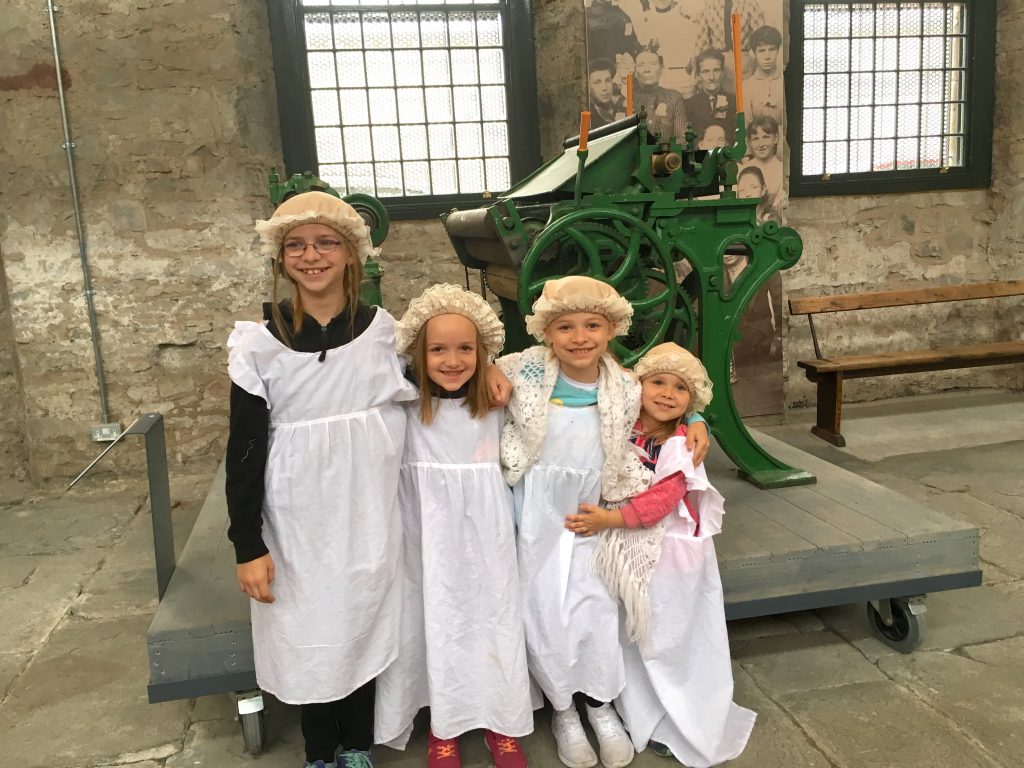
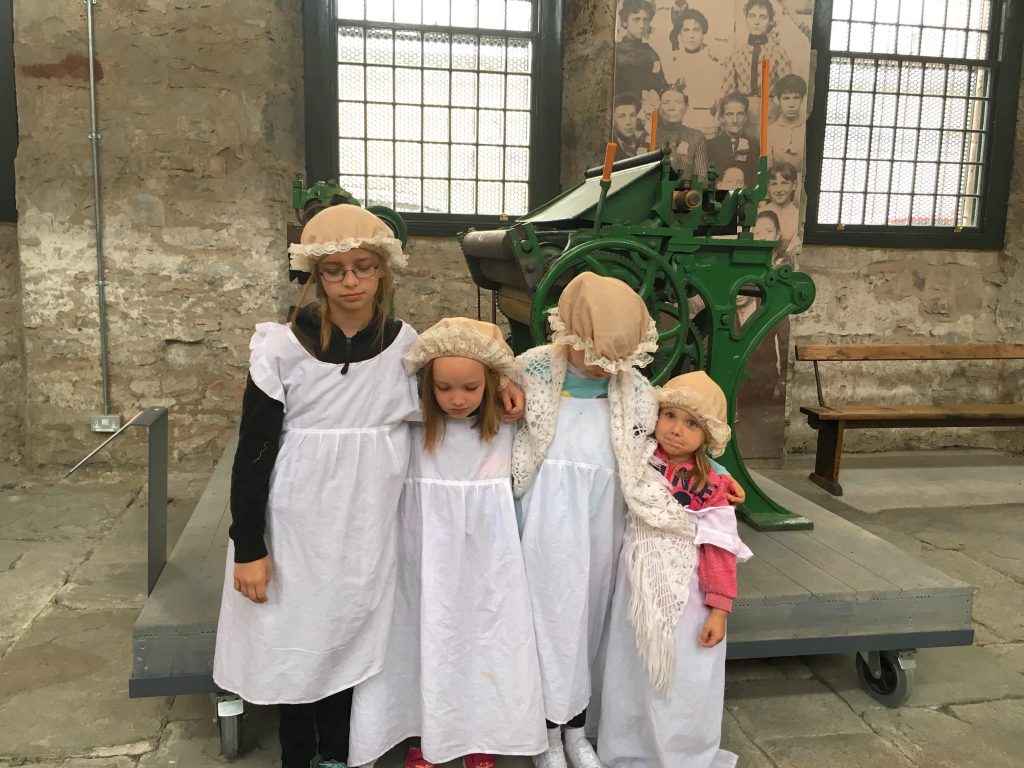

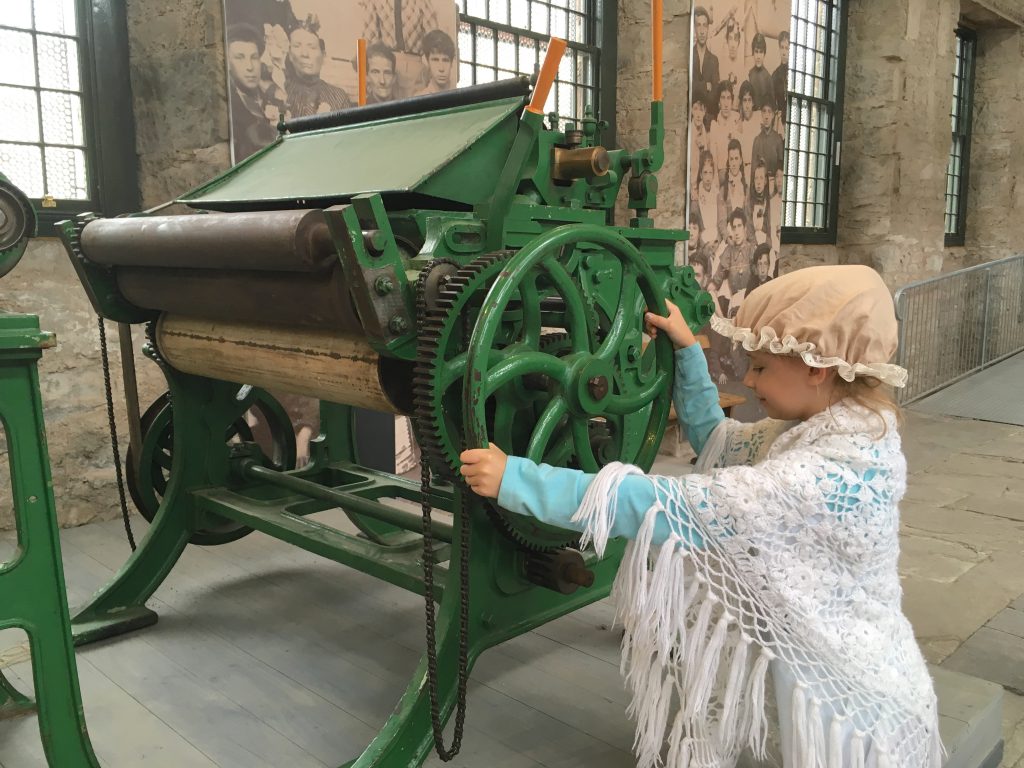
The Verdant Works Jute Mill is a one of a kind museum that should be experienced whether you’re a Scotland native or passing through on a visit. It holds such a particular and fascinating history and it’s easy to be drawn into the story of the textile industry in Dundee. The exhibits are so well done and the girls were able to really understand what life was like for a millworker. You can plan your own visit at Verdant Works.







